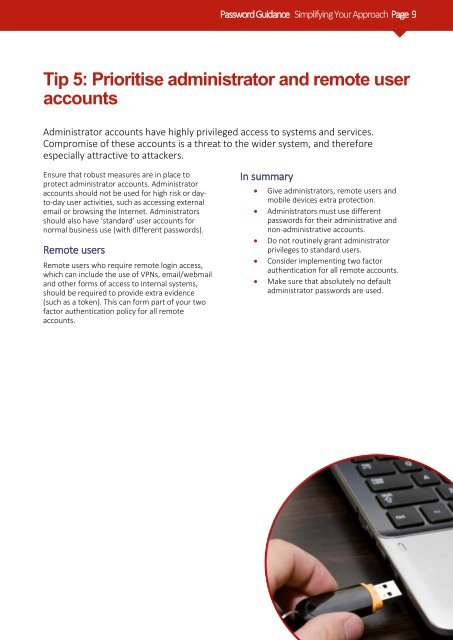Password Guidance
7mBUBUwJA
7mBUBUwJA
- No tags were found...
Create successful ePaper yourself
Turn your PDF publications into a flip-book with our unique Google optimized e-Paper software.
<strong>Password</strong> <strong>Guidance</strong> Simplifying Your Approach Page 9<br />
Tip 5: Prioritise administrator and remote user<br />
accounts<br />
Administrator accounts have highly privileged access to systems and services.<br />
Compromise of these accounts is a threat to the wider system, and therefore<br />
especially attractive to attackers.<br />
Ensure that robust measures are in place to<br />
protect administrator accounts. Administrator<br />
accounts should not be used for high risk or dayto-day<br />
user activities, such as accessing external<br />
email or browsing the Internet. Administrators<br />
should also have ‘standard’ user accounts for<br />
normal business use (with different passwords).<br />
Remote users<br />
Remote users who require remote login access,<br />
which can include the use of VPNs, email/webmail<br />
and other forms of access to internal systems,<br />
should be required to provide extra evidence<br />
(such as a token). This can form part of your two<br />
factor authentication policy for all remote<br />
accounts.<br />
In summary<br />
<br />
<br />
<br />
<br />
<br />
Give administrators, remote users and<br />
mobile devices extra protection.<br />
Administrators must use different<br />
passwords for their administrative and<br />
non-administrative accounts.<br />
Do not routinely grant administrator<br />
privileges to standard users.<br />
Consider implementing two factor<br />
authentication for all remote accounts.<br />
Make sure that absolutely no default<br />
administrator passwords are used.


